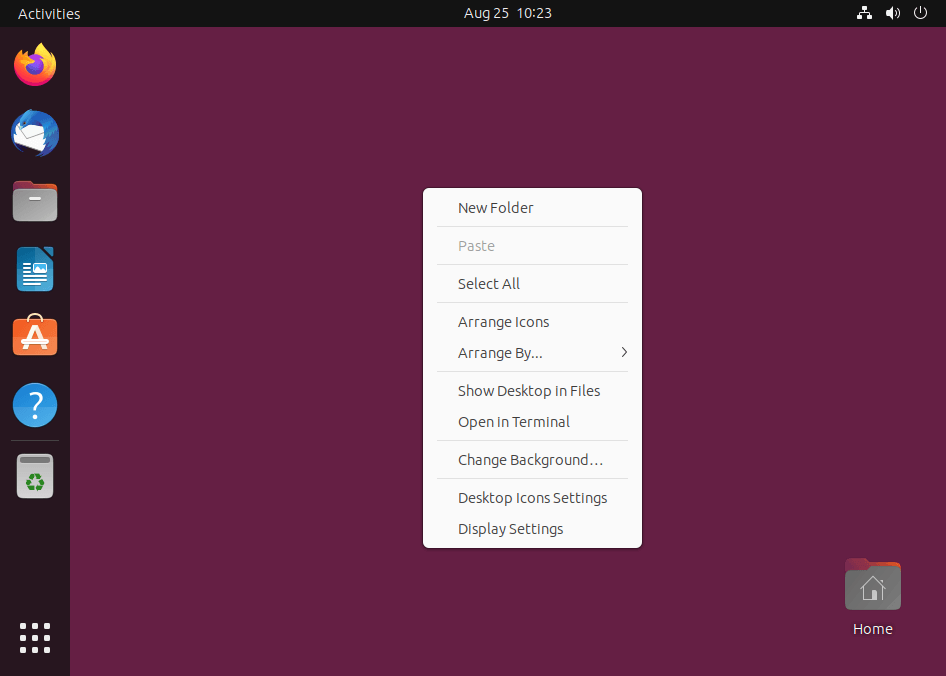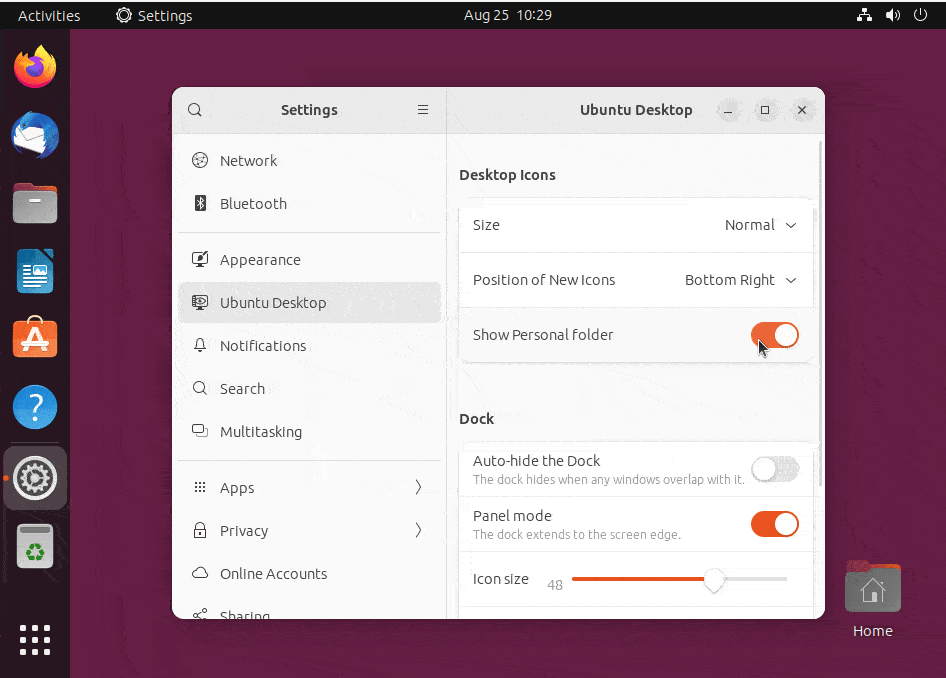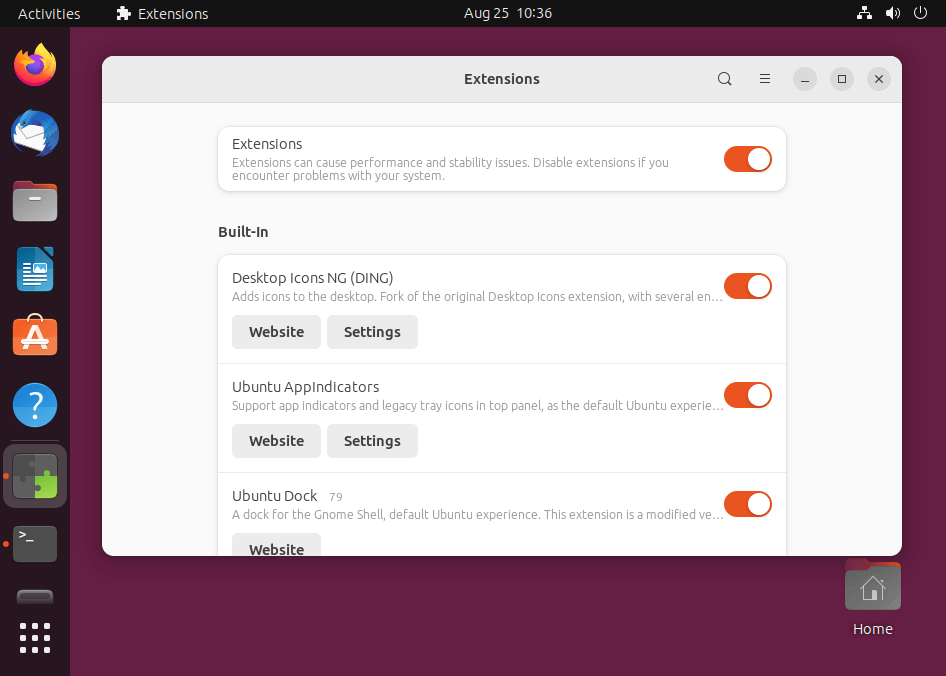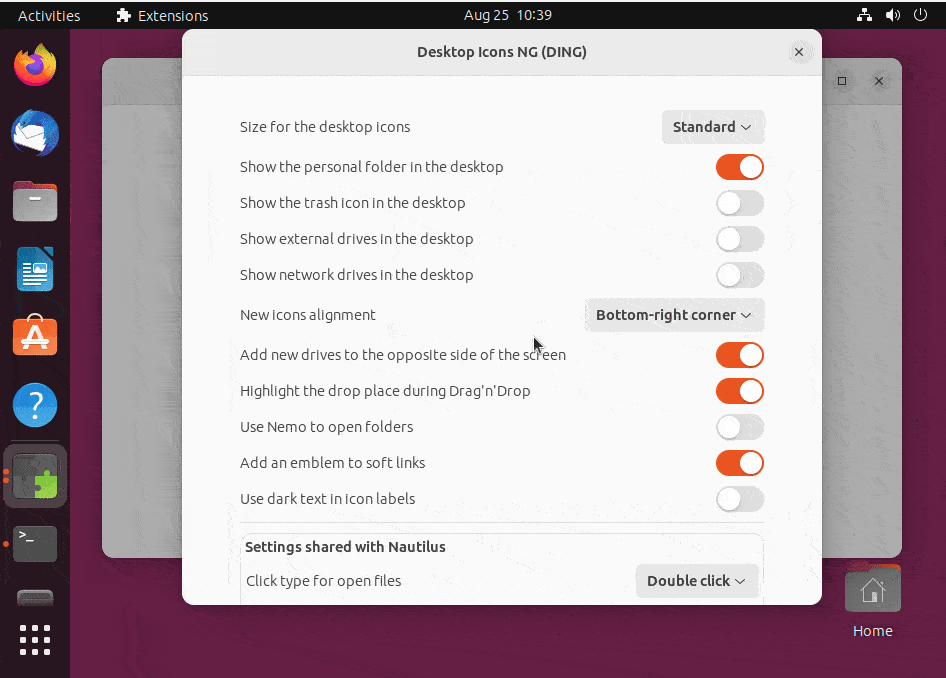Do you prefer a minimalist desktop and want to get rid of the Home Folder icon from your Ubuntu desktop? This way, you could focus more effectively on necessary applications, avoiding potential distractions.
This guide will walk you through a bunch of super easy methods to remove the Home Folder icon from your Ubuntu desktop.
Why Remove the Home Folder Icon?
Before proceeding, it’s important to understand why you might want to remove the Home Folder icon from your Ubuntu desktop. Some reasons include:
- Minimalist Desktop – A clean and minimalistic desktop can help you focus better and reduce visual clutter.
- Customization – If you have your own system for organizing files and prefer using the file manager from the launcher or a keyboard shortcut, you might find the desktop icon unnecessary.
- Personal Preference – Everyone has their own way of working with their computer. If the Home Folder icon doesn’t serve a purpose for you, removing it can streamline your desktop.
Removing Home Folder Icon from Ubuntu Desktop
The instructions provided here are based on Ubuntu 22.04 LTS, but the instructions might be similar for other versions of Ubuntu as well.
The “Home Folder” icon refers to the user’s personal directory containing various resources, including documents, pictures, downloads, music, videos, configuration files, and more in Ubuntu.
It is always remember to back up your important data before making changes to your system.
Method 1: Using Desktop Setting GUI
Right-click on your Ubuntu desktop to open the drop-down list, and then select the “Desktop Icon Settings” option.

On the “Settings” tab, go to the “Ubuntu Desktop” window, here you will find a section labeled “Desktop Icons“. There, you’ll see a toggle switch for “Show Personal folder, simply click on the switch to turn it off or on.

Navigate to your desktop to verify the changes. You can select/check this option to show the Home directory on the desktop screen again.
Method 2: Using Extensions Prefs App
You can also tweak/customize the Gnome desktop icons using an application named “Extensions Preferences”, which offers a graphical user interface to manage GNOME Shell extensions, which consist of small code snippets that aid in adding, modifying, and enhancing various aspects of the GNOME desktop environment.
Most of the latest Ubuntu versions come with the “Extensions Preferences” application pre-installed. However, if you don’t have it, you can install it using the apt command as shown.
$ sudo apt install gnome-shell-extension-prefs
After the installation is complete, simply search for the “Extensions” app in all applications and open it.

Inside the “Extensions” application, open the “Settings” button corresponding to the “Desktop Icons NG” option. Next, uncheck/deselect the option related to displaying the “Personal folder”.

Method 3: Using gsettings Command
The gsettings command is used to modify the settings of the system, applications, and various components in the GNOME desktop environment.
On Ubuntu 22.04
To remove the Home directory icon from your system’s desktop, simply execute the stated “gsettings” command:
$ gsettings set org.gnome.shell.extensions.ding show-home false
However, you can utilize the following command to make your Home folder icon visible on the desktop:
$ gsettings set org.gnome.shell.extensions.ding show-home true
On Ubuntu 20.04
If you are using Ubuntu 20.04 or an earlier version, the command is slightly different. In such cases, execute the provided command to hide the Home folder from your desktop:
$ gsettings set org.gnome.shell.extensions.desktop-icons show-home false
Run the following “gsettings” command to unhide your Home directory icon:
$ gsettings set org.gnome.shell.extensions.desktop-icons show-home true
That’s it for this method, let’s discuss the last method for this blog.
Method 4: By Disabling GNOME Extensions
An alternative approach to hide or reveal the Home folder involves disabling the GNOME extension “[email protected]”, responsible for displaying icons on the desktop, including the Home Folder icon.
On Ubuntu 22.04
If you are using Ubuntu 22.04, execute the command below to remove icons from your desktop:
$ gnome-extensions disable [email protected]
To bring back the icons, enable the “[email protected]” extension by executing this command:
$ gnome-extensions enable [email protected]
On Ubuntu 20.04
However, if you are on Ubuntu 20.04 or an earlier version, your system contains the “desktop-icons@csoriano” extension which is responsible for displaying desktop icons, including the Home folder icon.
To hide these icons, disable the extension using this command:
$ gnome-extensions disable desktop-icons@csoriano
To display these icons on your desktop again, simply enable the “desktop-icons@csoriano” extension:
$ gnome-extensions enable desktop-icons@csoriano
Conclusion
This comprehensive guide offers four different methods to hide the Home folder icon from the Ubuntu desktop, allowing you to obtain a clutter-free desktop and focus on essential application icons.
